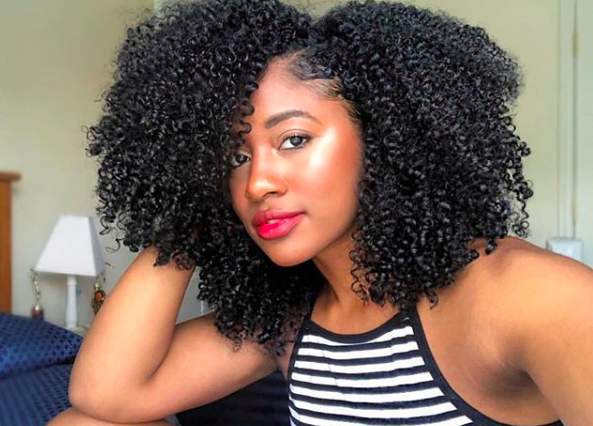For black women, hair carries an importance and significance that goes beyond words. Our crowns have been shamed for years, leading to endless textural changes and hairstyles that were meant to ensure our white peers were comfortable.
While the acceptance that’s come to our natural hair in recent years is not necessarily a movement, there is a re-learning process when we explore how to deal with a big chop or transition, as well as how to take care of our natural hair.
With the many curly, kinky, coily textures that can be found within the array of our natural hair, there's something we all have in common — our edges. Whether you prefer them laid to the gods or left naturally, they’re there and they need some TLC.
Our edges are a finer, more sensitive and fragile kind of hair that we tend to manipulate more often than the rest of our hair. Due to the constant manipulation required to lay and swirl, or tugging due to fun and trendy hairstyles, our edges tend to become that much more fragile and can even break off, making them difficult and sometimes impossible to regrow.
Keep scrolling for some tips on taking care of your edges to prevent breakage:
Moisturize
Keeping your hair moisturized is the key to shiny, hydrated, bouncy curls and this also gives your edges extra TLC. Making use of oils such as avocado oil, castor oil, peppermint oil and jojoba oil can promote and maintain a healthy and nourished scalp. According to ManeAddicts, finding products with natural carrier oils, such as flaxseed and aloe vera, is also good for your edges, but they do recommend seeing a specialist for thinning edges to ensure it’s not health related.
Not too tight
There are many hairstyles that call us — box braids, faux locs, cornrows, high and tight ponytails, weaves and wigs — but these hairstyles can also cause a lot of tugging stress to your edges. According to Allure, the founder of haircare brand Curls, Mahisha Dellinger, notes "Weaves and braids can certainly do more harm than good." While wigs may seem like the safer option, always ensure that the wig fits the way it’s supposed to. If a wig is too tight, it scratches and scrapes against your head and can cause breakage. This also applies to a wig that is too loose; it moves on your head causing it to constantly rub against your hair and scalp, another way to cause breakage.
Keep clean
Product buildup is nearly inevitable when you’re trying to make sure that your edges are laid. However, try your best to keep your scalp and edges clean. Product buildup does just that, it builds up on your hair which can cause breakage. We’re all guilty of piling on the product day after day without washing out what was there in the first place. Let’s make a pact readers: we will keep our scalps and edges clean so we can keep our edges till we’re 90-year-olds.
Loss, breakage and something a little more serious
There are many reasons as to why you may start seeing your edges thinning or simply falling out — medical conditions, lack of TLC and having a baby (hair loss and hair thinning after having a baby is common and is said to stop falling between your baby’s six months to his/her first year). Board certified dermatologist, Michelle Henry, shared with Allure that another reason that you might notice hair loss or thinning is the dreaded A-word — alopecia.
There are two types of alopecia, and it’s important to ensure you know the difference and which one might apply. Traction alopecia happens due to tight hairstyles, so always be aware of how much your hairstyle is tugging at your scalp. Another form of alopecia is androgenetic alopecia, which is caused by genetics.
If you feel that your hair loss or breakage is a little more severe than lack of TLC, a visit to the dermatologist or a trichologist might be something to consider.
Taking a few minutes each day to give your edges some love and care can become a part of your daily routine, and trust us, your edges will thank you.
Ready. Set. Boss. Our daily email is pouring out inspiration with the latest #BlackGirlBossUp moments, tips on hair, beauty and lifestyle to get you on track to a better you! Sign up today.
